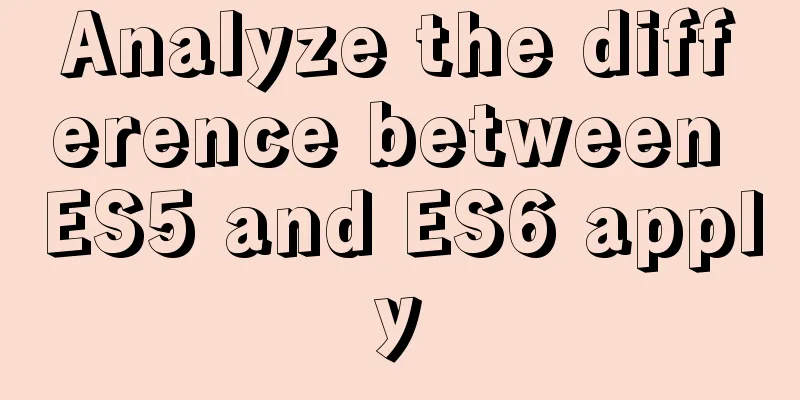CSS to achieve compatible text alignment in different browsers

|
In the front-end layout of the form, we often need to align the prompt text of the text box at both ends, for example:
A more crude approach is to add tags to the text that needs to be isolated by margins, and then control the margins of each word separately. This method is more accurate than directly adding spaces or placeholders, and I have done this before. But after writing more, I began to wonder if it could be abstracted and used in more scenarios? Make the code look better? Lower maintenance costs? 1. The first thing that comes to mind is whether the problem can be solved directly with CSS CSS
.test-justify {
text-align: justify;
}html
<div class="test-justify">
Test text</div>
Well,
It turns out that this property is for aligning the text at both ends of a paragraph. Next, try CSS
.test-justify {
text-align: justify;
}
The effect is achieved, but the disadvantage is that it is completely incompatible with IE and Safari browsers. 2. Then think about it. Since the above implementation has compatibility issues, can we write separate CSS classes for texts of 2, 3, 4, etc. lengths to solve the problem? Because the text box prompts in the form will not have many words. CSS
div {
width: 100px;
}
.w2 {
letter-spacing: 2em;
}
.w3 {
letter-spacing: 0.5em;
}html <div class="w2">Test</div> <div class="w3">Tested</div> <div>Test is coming</div>
This solution seems to be able to solve the problem and should be able to handle most scenarios, but unfortunately it is not truly aligned at both ends and still cannot meet the needs in special display situations. Let's put it aside for now and continue trying. 2. The above is a pure CSS implementation. Next, let's see if we can combine CSS and DOM to create a unified solution. html
<div class="test-justify">
Test text <span></span>
</div>CSS
.test-justify {
text-align: justify;
}
span {
display:inline-block;
padding-left:100%;
}
I am a little excited when I think about it, and it is perfectly compatible with IE and Safari. This solution is actually an extension of the first paragraph alignment solution. It uses spaces to force word separation, and then uses span to fake the last line (test-justify will not align the last line). In order to increase scalability, we have to optimize this solution because in most cases the text is loaded from the backend. For example, the .net core razor view loads the model displayname as written in <label asp-for="Email"></label> Just add a small piece of js and it should be compatible with all scenarios.
div {
width: 300px;
border: 1px solid #000;
}
.test-justify {
text-align: justify;
}
span {
display:inline-block;
padding-left:100%;
}html
<div class="test-justify">
Test text</div>js
var $this = $(".test-justify")
, justifyText = $this.text().trim()
, afterText = "";
for (var i = 0; i < justifyText.length; i++) {
afterText += justifyText[i] + " ";
}
afterText = afterText.trim() + "<span></span>";
$this.html(afterText).css({ "height": $this.height() / 2 + "px" });
Well, this solution should be able to support mainstream browsers, but the disadvantage is that since it is adjusted through js, if you look carefully when refreshing, you will see the process of text alignment (flashing), the experience is not very good, so let's make it compatible.
function myBrowser() {
var userAgent = navigator.userAgent;
//Determine the browser version var isOpera = userAgent.indexOf("Opera") > -1;
var isIE = userAgent.indexOf("compatible") > -1 && userAgent.indexOf("MSIE") > -1 && !isOpera;
var isEdge = userAgent.toLowerCase().indexOf("edge") > -1 && !isIE;
var isIE11 = (userAgent.toLowerCase().indexOf("trident") > -1 && userAgent.indexOf("rv") > -1);
if (/[Ff]irefox(\/\d+\.\d+)/.test(userAgent)) {
return "Firefox";
} else if (isIE) {
return "IE";
} else if (isEdge) {
return "IE";
} else if (isIE11) {
return "IE";
} else if (/[Cc]hrome\/\d+/.test(userAgent)) {
return "Chrome";
} else if (/[Vv]ersion\/\d+\.\d+\.\d+(\.\d)* *[Ss]afari/.test(userAgent)) {
return "Safari"
} else {
return "unknown"
}
}
var browser = myBrowser();
if (browser == "IE" || browser == "Safari") {
var $this = $(".test-justify")
, justifyText = $this.text().trim()
, afterText = "";
for (var i = 0; i < justifyText.length; i++) {
afterText += justifyText[i] + " ";
}
afterText = afterText.trim() + "<span></span>";
$this.html(afterText).css({ "height": $this.height() / 2 + "px" })
}Hahahaha, perfect! The above is the full content of this article. I hope it will be helpful for everyone’s study. I also hope that everyone will support 123WORDPRESS.COM. |
<<: Detailed explanation of Vue custom instructions
>>: HTML fixed title column, title header table specific implementation code
Recommend
JS native 2048 game source code sharing (the latest on the Internet)
I have been learning about algorithms recently an...
How to fix the width of table in ie8 and chrome
When the above settings are used in IE8 and Chrome...
How to hide the version number in Nginx
Nginx hides version number In a production enviro...
Solution to the problem of insufficient storage resource pool of Docker server
Table of contents 1. Problem Description 2. Probl...
Docker uses root to enter the container
First run the docker container Run the command as...
Detailed explanation of using javascript to handle common events
Table of contents 1. Form events 2. Mouse events ...
Detailed tutorial on installing Docker on CentOS 7.5
Introduction to Docker Docker is an open source c...
Detailed explanation of redis persistence, master-slave synchronization and sentinel under Linux
1.0 Redis persistence Redis is an in-memory datab...
Simple steps to encapsulate components in Vue projects
Table of contents Preface How to encapsulate a To...
mysql-8.0.17-winx64 deployment method
1. Download mysql-8.0.17-winx64 from the official...
How to import Chinese data into csv in Navicat for SQLite
This article shares with you the specific method ...
Mysql example of splitting into multiple rows and columns by specific symbols
Some fault code tables use the following design p...
Steps to enable MySQL database monitoring binlog
Preface We often need to do something based on so...
How to implement line breaks in textarea text input area
If you want to wrap the text in the textarea input...
Vue.js implements calendar function
This article example shares the specific code of ...
















